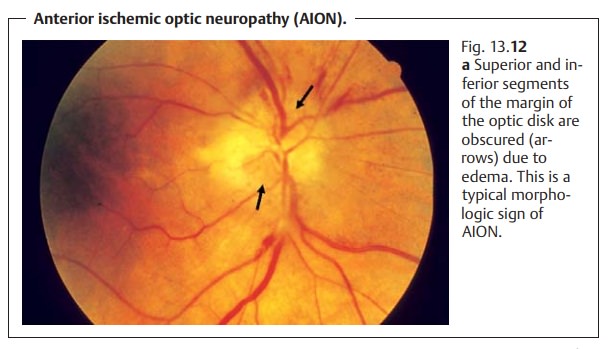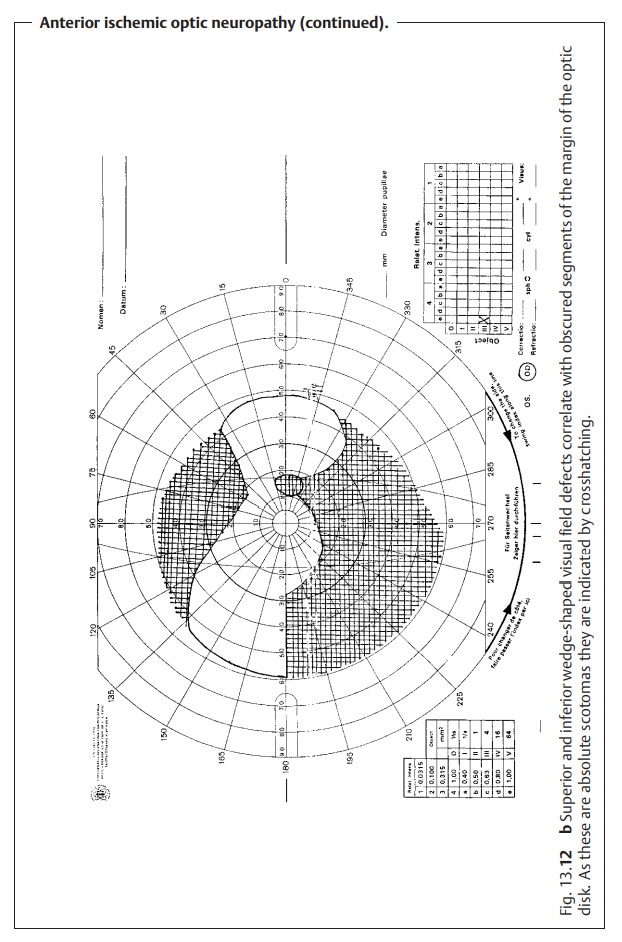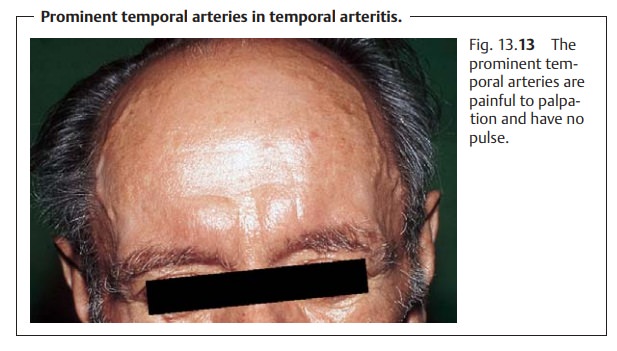Chapter: Ophthalmology: Optic Nerve
Arteritic Anterior Ischemic Optic Neuropathy
Arteritic Anterior Ischemic Optic Neuropathy
Definition
An acute disruption of the blood supply to the
optic disk due to inflammation of medium-sized and small arterial branches.
Epidemiology:
The annual incidence is approximately three
cases per100000. The disorder occurs almost exclusively after the age of 60.
Women are affected slightly more often than men, accounting for 55% of all
cases. Fifty per cent of all patients suffer from ocular involvement within a
few days up to approximately three months of the onset of the disorder.
Etiology:
Giant cell arteritis is a frequently bilateral
granulomatous vasculitisthat primarily affects the medium-sized and small
arteries. Common sites include the temporal arteries, ophthalmic artery, short
posterior ciliary arter-ies, central retinal artery, and the proximal portion
of the vertebral arteries, which may be affected in varying combinations.
Symptoms:
Patients reportsudden unilateral blindness or severe visualimpairment. Other
symptoms include headaches, painful scalp in the regionof the temporal
arteries, tenderness to palpation in the region of the temporal arteries, pain
while chewing (a characteristic sign), weight loss, reduced general health and exercise
tolerance. Patients may have a history of amauro-sis fugax or polymyalgia
rheumatica.
Diagnostic considerations:
The ophthalmoscopic
findings are the same asin arteriosclerotic AION (see Fig. 13.12a). Other findings include a signifi-cantly increased erythrocyte
sedimentation rate (precipitous sedimentation is the most important hematologic
finding), an increased level of C-reactive protein, leukocytosis, and
iron-deficiency anemia.


Erythrocyte sedimentation rate should be
measured in every patient presenting with anterior ischemic optic neuropathy.
The temporal arteries are prominent (Fig. 13.13), painful to palpation, and have no pulse. The diagnosis is
confirmed by a biopsy of the temporal artery. Because of the segmental pattern
of vascular involvement, negative histologic findings cannot exclude giant cell
arteritis.

Giant cell arteritis should be considered in every patient presenting with anterior ischemic optic neuropathy.
Differential diagnosis:
Arteriosclerotic AION should be considered.
Treatment:
Immediatehigh-dosage systemic steroid therapy (initial doses upto 1000 mg
of intravenous prednisone) is indicated. Steroids are reduced as the
erythrocyte sedimentation rate decreases, C-reactive protein levels drop, and
clinical symptoms abate. However, a maintenance dose will be required for
several months. Vascular treatment such as pentoxifylline infusions may be
attempted.
High-dosage systemic steroid therapy (for
example 250 mg of intravenous prednisone) is indicated to protect the fellow
eye even if a giant cell arteritis is only suspected.
Prognosis:
The prognosis for the affected eye ispooreven where therapy isinitiated
early. Immediate steroid therapy is absolutely indicated because in
approximately 75% of all cases the fellow eye is affected within a few hours
and cerebral arteries may also be at risk.
Related Topics